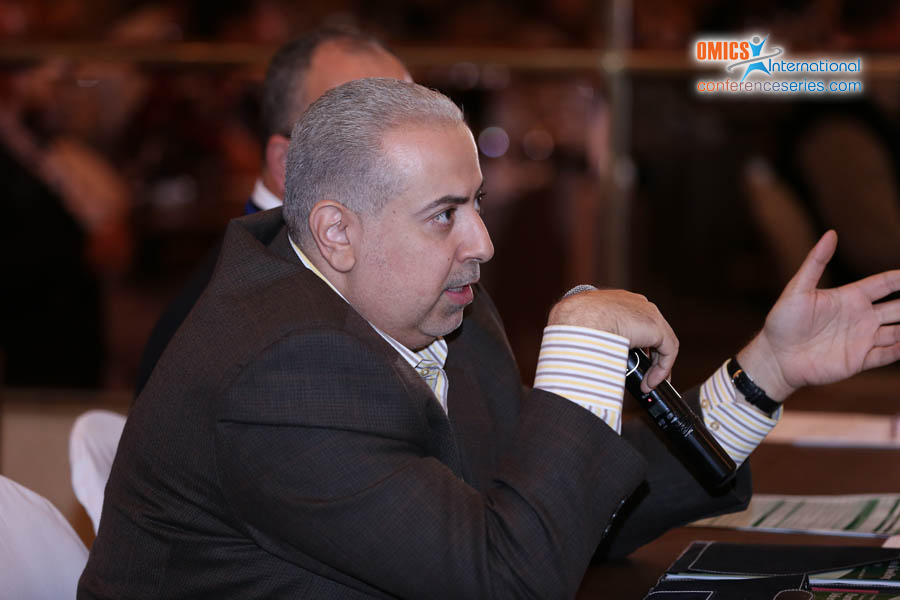
Husam M Younes
Qatar University, Qatar
Title: Oral formulations of Metformin in semi-solid matrices: Design, characterization & in vitro evaluations
Biography
Biography: Husam M Younes
Abstract
Purpose: To formulate and evaluate oral dosage forms of Metformin hydrochloride (MH) having sustained-release properties that would also increase MH bioavailability and address the shortcomings in the currently marketed sustained release tablets.
Methods: MH micronized powder was dispersed in molten polymeric matrices composed of Gelucire® 50/13 and various proportions of high molecular weight hydrophilic polymers, hydrophobic oily semisolid excipients, and mucoadhesive polymeric materials. The MH loaded matrices were filled in hard gelatin capsules (HGC) each containing 500 mg MH and were subsequently characterized using Differential Scanning Calorimetry (DSC) and X-Ray Diff raction Analysis (XRD). The prepared HGC were subjected to content uniformity and in vitro dissolution testing according to the USP-35 compendial requirements. The dissolution data were compared to instant and sustained-release marketed tablets. Th e effect of incorporating various proportions of the semisolid excipients on MH dissolution release rate, were also investigated.
Results: MH content of the prepared HGC ranged between 96 to 103%. All the prepared semisolid fi lled HGC resulted in extended release profiles of MH that lasted between 5 to 11 hours and demonstrated a release pattern which typically follows the release from mixes of triglycerides with polyethylene glycol esters of fatty acids. Th e incorporation of muco-adhesive excipients like Carbomer to the Gelucire® 50/13-MH semisolid matrices extended the release of MH from 5 hours initially to 9 hours as a result of the formation of a gel layer around the matrix. However, the incorporation of diff erent hydrophilic excipients like PEG35000 and Gelucire® 44/14 along with the muco-adhesive excipients sustained the release of MH up to 11 hours. XRD analysis of the MH prepared matrices demonstrated minor changes in the crystalline nature of MH. Depending on the loading ratios and the nature of the semisolid matrices used, DSC analysis revealed the changes in MH crystallinity to be from 100 to 23 %.
Conclusion: HGC formulated using semisolid matrices showed promising results in extending the release of MH. However, bioavailability studies to test the ability of such Gelucire based HGC of MH to improve its bioavailability and in vivo residence times are future plans.
Acknowledgements: This work was made possible by a NPRP award [NPRP 09-795-3-215] to HM Younes from the Qatar National Research Fund (a member of The Qatar Foundation). The statements made herein are solely the responsibility of the authors.






